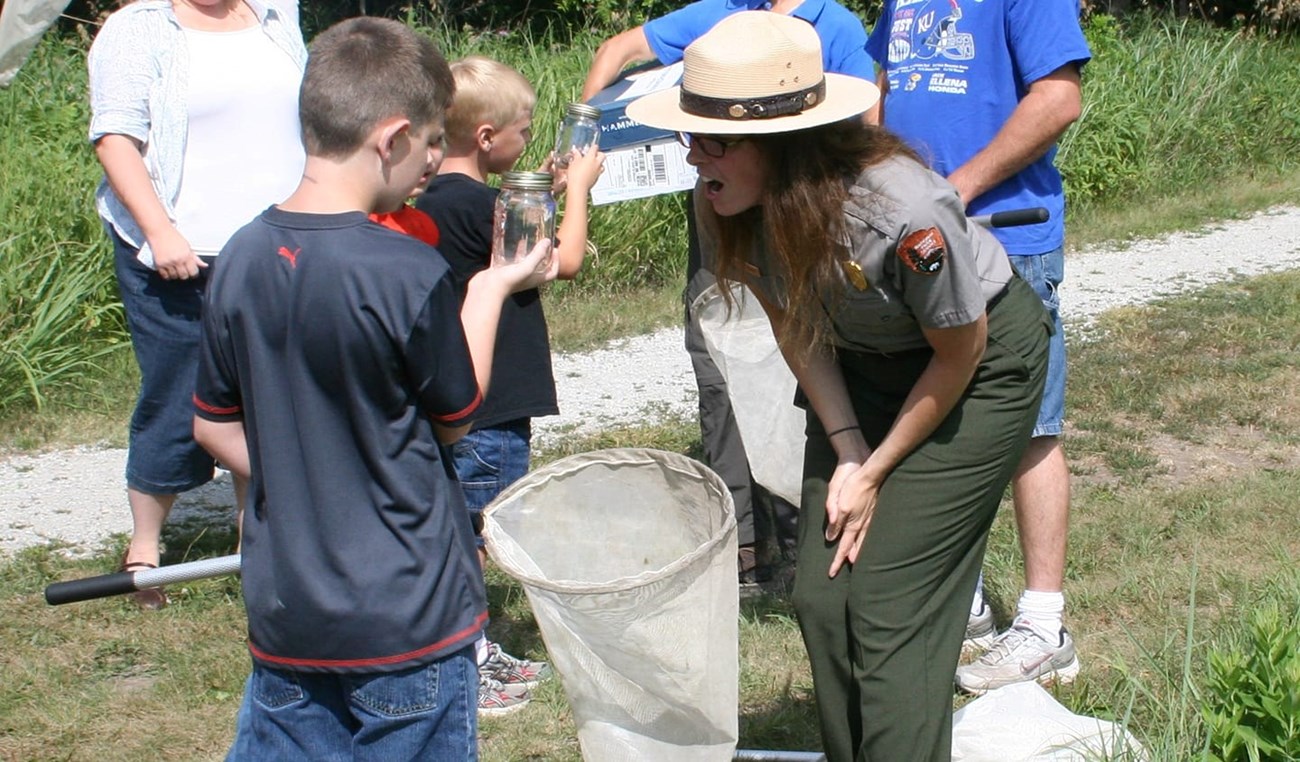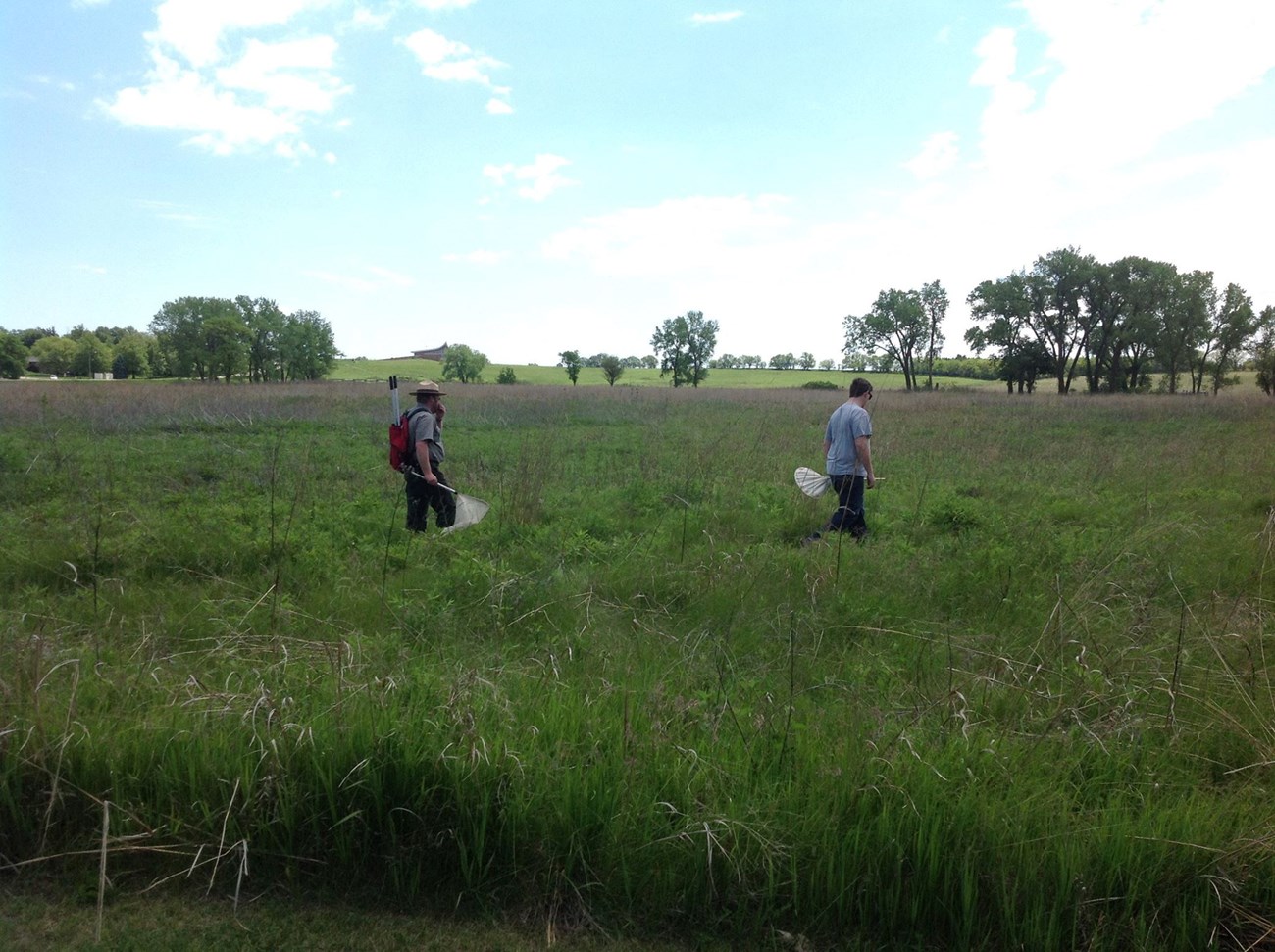Last updated: July 25, 2022
Article
Citizen Science at Homestead National Historical Park

What is Citizen Science?
Citizen science is the voluntary involvement of the public in scientific research. Citizen scientists can help design experiments, collect data, analyze results, and solve problems. Their work helps professional scientists and resource managers understand parks. Their data help solve real problems and answer real questions. In a nutshell, citizen science is science.
Who are Citizen Scientist?
How to get involved:
With 100 acres of restored prairie, a lowland burr oak woodland, and a creek flowing through the park, Homestead National Monument is a great place to get involved with citizen science. Whether it is twinkling stars, silly sedges, beautiful butterflies, towering trees or the chorus of the frogs, there are many different projects you can become involved with. SciStarter.org is a great place to begin searching for projects that might interest you.
While visiting Homestead National Monument of America, your observations can support two on-going projects helping to document bird species inside the park. These projects are accessed through eBird and iNaturalist, both of which have mobile and desktop apps available.
eBird:
eBird is a way to digitize, organize, and share all those bird lists you have been keeping! When walking Homestead’s trails you can use the eBird app on your device and keep a real-time list of what you see. If you go device free, you can keep handwritten or mental notes and upload your observations after your walk on your computer. The list of bird sightings at Homestead is already started... add your contributions now!
iNaturalist:
iNaturalist is similiar to eBird, however it is not limited to just birds, and it mostly relies on pictures. If you are using a device, photos can be taken directly in the app and a location will be automatically added. This will save you time when you plan to upload a large amount of photos. If you are observing device free, you can upload your submissions later on a computer, but take notes on where your observations were, as you will be asked when you upload a photo for submission.
As iNaturalist uses photos for identification and species suggestions, the better quality of photo you submit, the better your results will be. Because of this and the need for location information, it is often helpful to take an image with your device to create the observation and then add your high quality photos later.
iNaturalist also provides you and opportunity to hone your skills by identifying species in other people's photos. Once an observation has two people in agreeance on what species is observed, the observation is considered research grade and is of more value to resource professionals. Identifying is a fun way to be in the field when you can’t actually be in the field! The project to document the species of Homestead National Historical park has already begun, see what has been spotted, and add don't forget to add your contributions!
Explore Citizen Science projects throughout your National Parks!

NPS Photo
